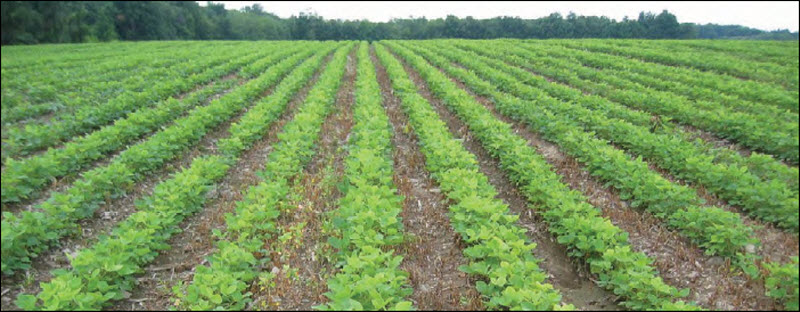Fertility (soil)
The soil fertility as a category of Soil Science is a complex term for all plant growth and biomass production influencing mineralogical, physical, chemical and biological soil properties and processes. It is a measure of the effectiveness of the actions of other growth factors on the growth site of a plant, such as relief, climate, water, and all arable and horticultural activities. Soil fertility also includes the soil properties that the nature, intensity and time ( persistence ) of mass transfer in the lying below the effective rooting depth decide ( off-site environmental impact ).
Management of soil fertility
Knowledge about constant, unstable and variable performance-limiting soil properties allow statements about the income security and weather-related fluctuations in earnings. They are a prerequisite for the development of a management to preserve, increase and utilization of soil fertility and site-appropriate and sustainable land use.
Analysis of soil fertility
Mineralogical, morphological, micromorphological, geohydraulic and soil mechanical, hydrological, micrometeorological investigation methods and procedures as well as substance - transport simulations in the unsaturated and saturated zone are used to determine a range of values of soil fertility properties applied (Indicator System).
Genesis of the ecological functions of soils
Soil fertility is independent of its complexity, its position according to a scheme of partialkomplexbezogenen process structures of biomass formation as well as on the target, the subject and methods of research, a term of Soil Science. It does not refer to the location on growth factors acting in total biomass production.
After the syn -ecological (= all environmental factors considered ) research approach position and importance of soil are being studied as part of a biogeocoenose or at the level of the ecosystem. That is, flora and fauna - a "partner" of the earth conceived - included in the analysis. It is developed as an analysis results on the one hand an effective soil fertility, on the other hand, a potential soil fertility, which can be regarded as ideal.
The relationships between climate and soil fertility, climate- dependent genesis and dynamics of soil fertility -determining properties, are objects of agricultural meteorology.
To improve the soil there are commercial precipitating substances such as fertilizer. There are a variety of counter-measures that counteract salination of the soil and loss of soil fertility. For example, was bagful applied in the Canadian city of Greater Sudbury lime to make the soil, which resembled by the decades-long influence of acid rain a lunar landscape fertile again. In agriculture, there are several methods, such as crop rotation, is known to improve soil fertility. In addition, thermal processes (eg the vapors ( soil disinfection ) with superheated steam ) can be used to rehabilitate sick soils and by the release of blocked nutrients to revive it again.









